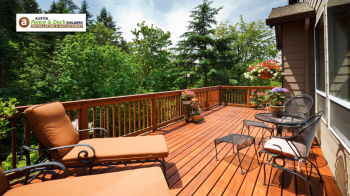TL;DR
The average lifespan of a deck depends on the material used and the level of maintenance. Pressure-treated wood can last 10–15 years, while composite and aluminum decks can exceed 30 years. In this guide, we break down how long each deck type lasts in Austin’s climate, how to prolong its life, and when replacement is the more brilliant move.
Introduction
How long should your deck last? It’s one of the most common questions Austin homeowners ask before investing in a new deck or debating whether to repair or replace an old one. Deck longevity depends mainly on the materials used, local climate conditions, and your ongoing maintenance efforts.
In this guide, we’ll explore the expected lifespans of popular decking materials, including wood, composite, and PVC. We’ll also share tips for extending your deck’s life and link you to professional deck services that can help when it’s time for repairs or replacement.
Table of Contents
ToggleAverage Deck Lifespan Overview
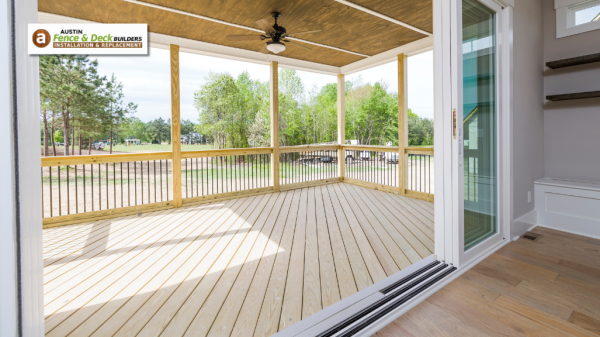
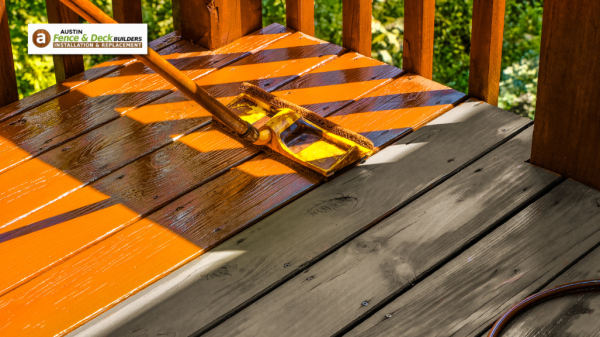

Deck materials vary widely in durability. Here’s a quick overview:
| Material Type | Average Lifespan |
| Pressure-Treated Wood | 10–15 years |
| Cedar/Redwood | 15–20 years |
| Tropical Hardwood (Ipe) | 25–30+ years |
| Composite Decking | 25–30+ years |
| PVC Decking | 25–30+ years |
| Aluminum Decking | 30–50 years |
These estimates assume a moderate climate and regular upkeep. In Austin’s hot and humid conditions, certain materials may degrade more quickly, especially if not properly sealed and cleaned.
How Long Do Pressure-Treated Wood Decks Last?
Pressure-treated lumber is one of the most cost-effective options, but it’s also one of the least durable. Expect a lifespan of 10–15 years, possibly longer with diligent maintenance, such as sealing and staining every 1–2 years.
Pros:
- Affordable
- Readily available
- Easy to repair
Cons:
- Prone to warping, cracking, and splitting
- Requires frequent maintenance
How Long Do Cedar, Redwood, and Tropical Hardwood Decks Last?
Cedar and Redwood
Naturally resistant to decay and insects, these softwoods can last 15–20 years if regularly cleaned and sealed.
Tropical Hardwoods (e.g., Ipe, Cumaru, Mahogany)
Hardwood decking can last over 25–30 years due to its extreme density and natural resistance to rot.
Pros:
- Visually stunning natural grain
- Long-lasting with proper care
Cons:
- Expensive upfront
- Challenging to work with during installation
How Long Do Composite Decks Last?
Made from a blend of recycled plastics and wood fibers, composite decks are engineered for longevity and low maintenance. Many brands offer warranties of 25 years or more, and some decks can last up to 30 years.
Pros:
- Low maintenance (no staining or sealing)
- Resists moisture, rot, and pests
- Available in many colors and textures
Cons:
- Higher upfront cost
- Can retain heat in direct sunlight
Composite decking is ideal for Austin’s variable climate, as it doesn’t warp or crack like traditional wood.
Learn more about composite deck installation and whether it’s right for your home.
How Long Do PVC and Aluminum Decks Last?
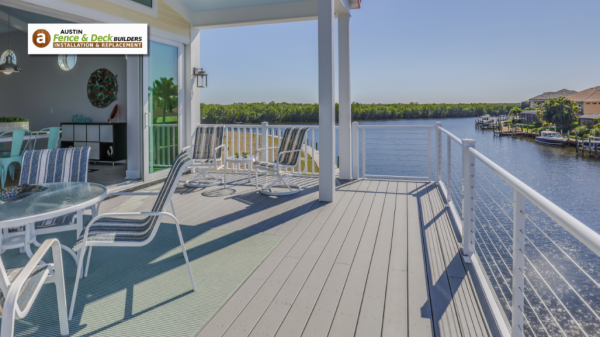
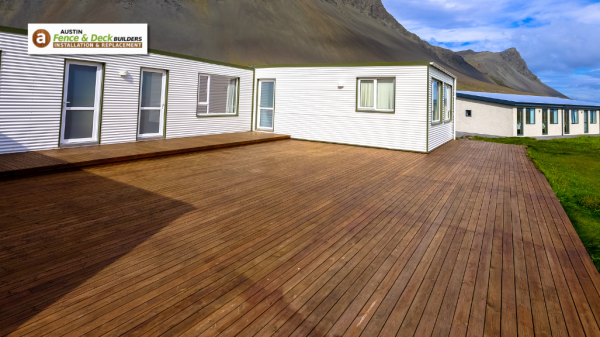
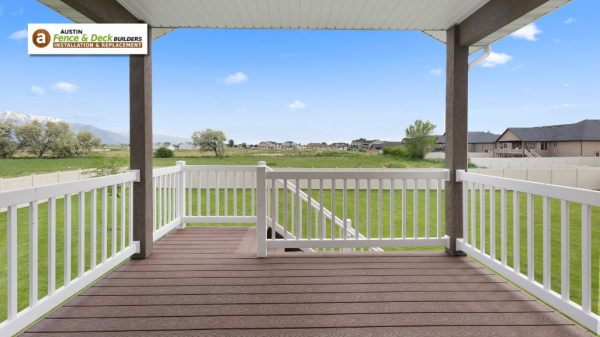
PVC Decking
PVC (polyvinyl chloride) decking is 100% synthetic and completely moisture-resistant. It can last 25–30 years with minimal maintenance.
Aluminum Decking
The longest-lasting option, aluminum decking, can easily exceed 30–50 years. It’s rust-proof, fireproof, and insect-resistant.
Pros of Both:
- Extremely durable
- Minimal maintenance
- Non-slip and eco-friendly options are available
Cons:
- Higher installation cost
- Limited availability and styles
What Shortens a Deck’s Lifespan?
Even the best material will degrade quickly under certain conditions:
- Neglected Maintenance: Failing to perform regular sealing, staining, or cleaning allows moisture to penetrate the wood and cause rot.
- Poor Drainage: Water pooling beneath or on the deck accelerates decay.
- UV Exposure: Prolonged sun exposure can cause wood to dry and crack.
- Improper Installation: Weak framing, poor flashing, or unsealed cuts can lead to structural failure over time.
- Insects and Mold: Especially in Austin, termites and mildew thrive in untreated, damp conditions.
Routine inspections can help catch issues early. For an in-depth check, schedule a deck inspection.
Choosing the Right Deck Material for Longevity
Selecting the right material is crucial for long-term thinking. Here’s how to make an informed decision:
- Consider Your Climate: Austin’s humid subtropical climate means materials should resist moisture, UV damage, and rapid temperature shifts. Composite and PVC fare better under these conditions than untreated wood.
- Budget vs. Longevity: While pressure-treated lumber is cost-effective, it may require more maintenance over time, resulting in higher expenses. Composite and PVC may be pricier upfront, but their durability reduces long-term expenses.
- Aesthetics & Feel: If you love the look and feel of natural wood, cedar or redwood are solid choices. Composite offers wood-mimicking textures with far less upkeep, making it a modern favorite.
- Maintenance Willingness: If you don’t have time or interest in routine upkeep, lean towards low-maintenance materials like composite or PVC.
- Environmental Impact: Some homeowners prefer sustainable wood options or recycled composite materials that have a lower environmental impact.
Work with experienced deck contractors in Austin to evaluate your needs and get professional guidance tailored to your space and goals.
Frequently Asked Questions
How long does a pressure-treated wood deck last?
Typically 10–15 years, or longer, with sealing and regular maintenance.
What deck material lasts the longest?
Aluminum can last 30–50 years. Composite and PVC typically last 25–30 years.
Do composite decks fade or warp?
High-quality composites resist fading and warping, especially when properly installed.
Is it worth upgrading from wood to composite?
Yes—especially in Austin’s climate, where composite decks last longer and require less upkeep.
Final Thoughts
Your deck is more than just a platform—it’s an extension of your lifestyle and an enhancement to your home’s value. Understanding how long different materials last helps you make cost-effective, durable, and visually appealing choices.
Whether you opt for traditional wood or a modern composite, maintaining your deck and monitoring its wear will help it withstand the test of time. For personalized guidance or help with inspections and replacement, contact the experts at Austin Fence & Deck.

